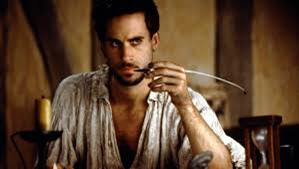by Douglas
Messerli
Barbara Hammer
(director) Audience / 1982
Long time lesbian
filmmaker finally had three retrospectives in the early 1980s, in San Francisco,
London, and Toronto. In 1982-1982, Hammer put together a series of interviews
that she had made with audiences at those events, beginning with a simple
questioning of the long line waiting to get into the San Francisco Roxie,
mostly asking women and a few men what they expected to see inside.
But what is amazing about these
encounters is the near unanimous excitement of being with so many fellow
lesbians in one theater, and the film joyfully embraces that sort of raucousness.
Even in San Francisco, it was still difficult to express same-sex feelings in
public, and except for bars, private gatherings, and special occasions as these
the coming together of so many various women of the same sex was not common. One
can sense the thrill of the experience.
Before the films began Hammer spoke, talking
about how she wanted her audience to actually feel the sensation of the films,
to share the emotional responses of the women within her films. She spoke of a
desire for a tactile presence and a full emotional response. In Pools,
she laughed, she wanted the women “to get wet.”
On
the other hand, in Montreal, the women, as one of them put it, were all
beautiful, quite intelligent, and knowledgeable, mostly in awe of Hammer,
cajoling her to move there to be with them. Drinks in hand, these women moved
more freely around a much larger space and speaking in both French and English
had a much more sophisticated notion of who they were and what Hammer’s films
meant to them, almost entirely positive, although the issue of sexual imagery
did again arise momentarily, which when I think back would have been still
somewhat shocking in 1982, although gay male porno was well established and had
begun to cross over to more serious gay cinema already by that time. But this
Montreal group seemed quite aware of the difference between Hammer’s
representation of the body and the way the body was represented in pornography.
Sally Jane
Black, on the Letterboxd site, wrote a fascinating commentary that began with Hammer’s
appearance at the San Francisco event, the first paragraph of which is worth
sharing. At one point, one of the women identifies herself as an epidemiologist
studying sexually transmitted diseases, whose first question she generally asks,
she jokes, was “who did you sleep with last night?” Taken a bit aback, Hammer
suggests that she would be more interested in knowing what disease she had and
how to get rid of it, although she wasn’t shy about admitting that she had had
wonderful sex the night before the event. Black summarizes my feelings as well:
“The
epidemiologist who studied sexually transmitted diseases was on the cusp of her
whole world being turned upside down, I suspect, given the date of this
release. It's a powerful phenomenon to witness someone whose future you know is
going to radically change in a short period of time documented before that
change comes. It has a similar feeling to when you look back at media about
pandemics now; it feels different than it did in its original context. When
this came out, the full extent of the HIV/AIDS epidemic was not known nor even
perhaps imagined. Her interview in this is brief and mostly irrelevant to my
speculations; she charmingly engages with Hammer about sex and queer
representation. It is very telling that she stated that the staff where she worked
needed more education about queer experiences.”
These small revelations of the time in
which Hammer’s film was made—several of which appear throughout this short
documentary—are what make this work so significant. It is as if looking back
into a world and time when the LGBTQ issues, our rights and concerns we now
take for granted, were at best fuzzy, undefined and at worst seemed improbable.
These women, mostly in their 20s and 30s in the film, now in their 60s and 70s,
lived as outsiders in countries (US, England, and Canada) filled with citizens
mostly disapproving and even disgusted by their behavior. Barbara Hammer, who
in this film is an attractive woman, died in 2019 at the age of 80.
Once again, Black nicely capsulizes those
feelings:
“The impact of
seeing queer women in 1981…enthused about a rare instance of cinematic
representation cannot be understated. Today, we have the Internet to help us
dig through the constantly expanding history of queer cinema, but in 1981,
independent showings or other fringe events were possibly the only way to see a
Barbara Hammer film. We get to see queer people in queer spaces (temporary or
not) watching cinema made for them, then dissecting it, responding to it,
feeling it. … What I see is the
time capsule, the fragments of a world in between Stonewall and ACT UP. It
evokes a deep yearning for moments of sorority with other lesbians, dykes, and
queer people in general, something that the past year has denied so many of us.
It shows the spirit of these spaces where being queer or a woman was being
celebrated instead of derided or controlled. That feeling alone is worth
watching for.”
Los Angeles, March
14, 2024
Reprinted from My
Queer Cinema blog (March 2024).
.jpg)
.jpg)


















